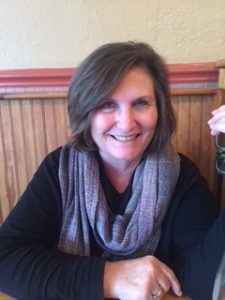
I am Maryann Maxwell Durland and I am part of the leadership team of the Social Network Analysis (SNA) TIG, along with Rebecca Woodland, and Sophia Guevara. One important distinction between our TIG and many others is that we are not a primary TIG for many members, but rather a “secondary” choice. Primary choices tend to be the area or field where we work or a specific interest such as the Disaster & Emergency Management Evaluation TIG. A secondary choice is of interest to an evaluator but generally not at the level of attending the business meeting or participating in TIG activities. Our leadership has been addressing this pattern and working to encourage evaluators to become more engaged in their secondary TIG’s, as well as providing resources that will address learning and professional development needs better. To inform this goal, in December 2017, we sent a survey to our members (300+) with a response rate of 12%.
Overall Results indicate that:
- Half of the 38 members who responded are at the novice and beginner level; Another 13% rate themselves as experts
- Based on respondents ranking of their confidence level with SNA concepts, we have a mix of members some who are very confident about concepts and a larger percentage who are not confident or have a little confidence.
- Very few of respondents indicated confidence with software on a three point scale 11% with Gephi, 11% with R and 14% with UCINET. Respondents also listed 11 other software they use.
- Over 70% of respondents have used SNA in describing a program as part of an evaluation and measuring/visualizing program outputs. Another 68% have used it in creating a final evaluation report, and 55% in engaging stakeholders.
- The majority of respondents have not read common texts related to SNA concepts and several listed other texts they have read.
In the chart below are the specific concepts we asked about. Based on the survey results, the leadership team thought that we would address, from not confident to the very confident levels, the concepts that are foundational to doing SNA. All of our posts this week will discuss a variety of concepts and uses for SNA. I have started by illustrating how our TIG is addressing how we can be useful to our members. In addition, I’ll provide under Rad Resource, a short description of a classic book for first getting a sense of SNA.
Rad Resource:
John Scott’s Social Network Analysis (3ed) gives a clear and readable overview of Social Network Analysis. Scott provides key definitions and an historical perspective, as well as covering key conceptual concepts. He includes brief examples in each chapter to further illustrate applications.
The American Evaluation Association is celebrating Social Network Analysis TIG Week with our colleagues in the Social Network Analysis Topical Interest Group. The contributions all this week to aea365 come from our SNA TIG members. Do you have questions, concerns, kudos, or content to extend this aea365 contribution? Please add them in the comments section for this post on the aea365 webpage so that we may enrich our community of practice. Would you like to submit an aea365 Tip? Please send a note of interest to aea365@eval.org. aea365 is sponsored by the American Evaluation Association and provides a Tip-a-Day by and for evaluators.


thanks for this survey you have shared and i m very thankful to you and with the help of this survey i have learn alot thanks
Thank you for sharing, Maryann. Very interesting survey results. You’ve encouraged me to learn more about these constructs.
Another good resource is Hanneman’s online text, which is a companion text/instructional guide for UCINet.
http://www.faculty.ucr.edu/~hanneman/nettext/
Hi all
Readers may be interested to know that SNA software can be used to visualise connections between items of qualitative information e.g. MSC stories or the results of card/pile sorting exercises (used in ethnographic inquires).
Two MSC stories may be connected to each other if they have both been given the same tags/labels by the storytellers or some other party. Two groups, like villages, may be linked to each other by being put in the same pile by a pile sorting participant.
Network visualisation software can then show how the MSC stories, or the villages, are connected as a whole, showing clusters, isolates, bridges, cliques, peripheral parties, etc
For more, see “Network visualisation of qualitative data” at http://mande.co.uk/special-issues/participatory-aggregation-of-qualitative-information-paqi/